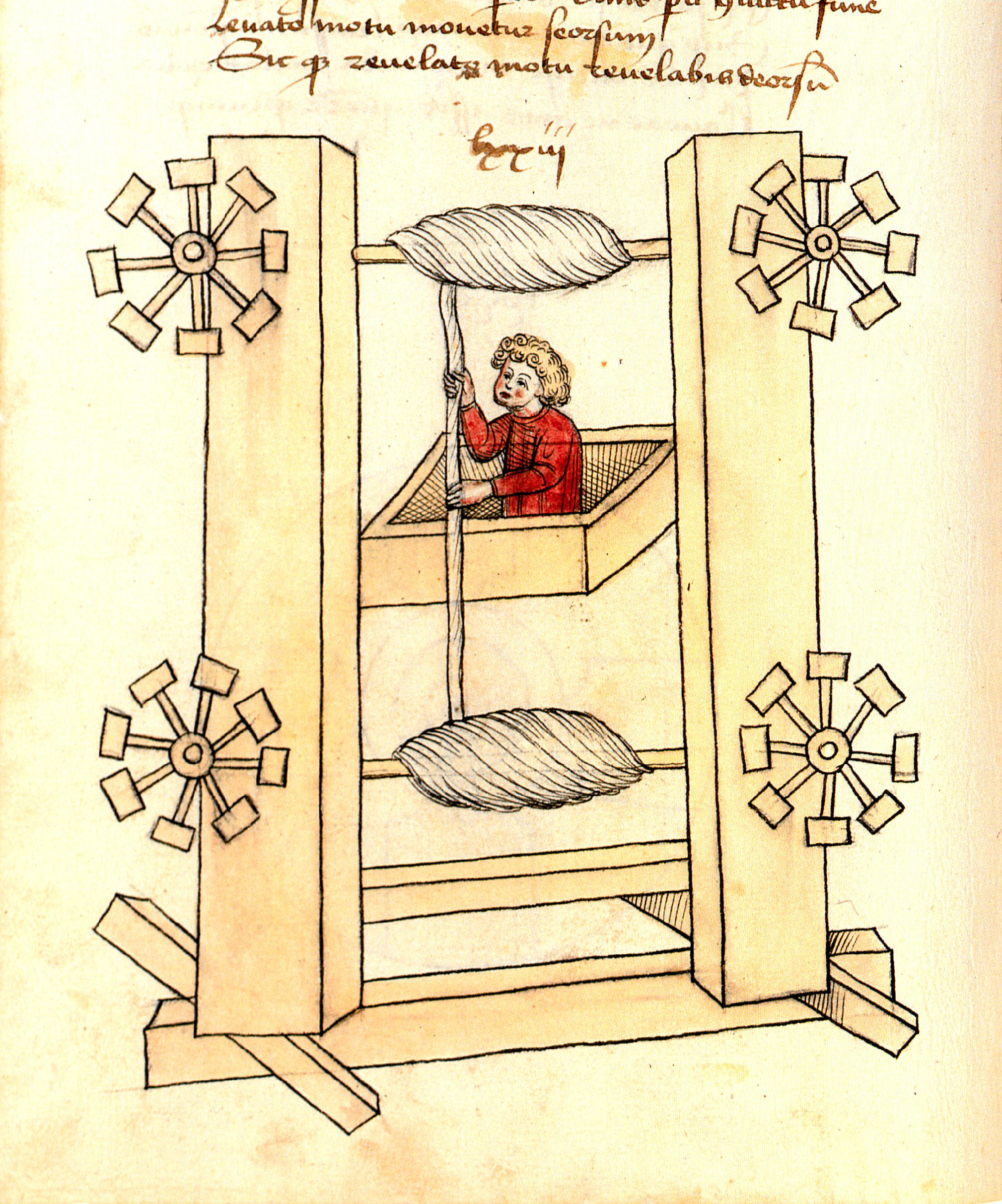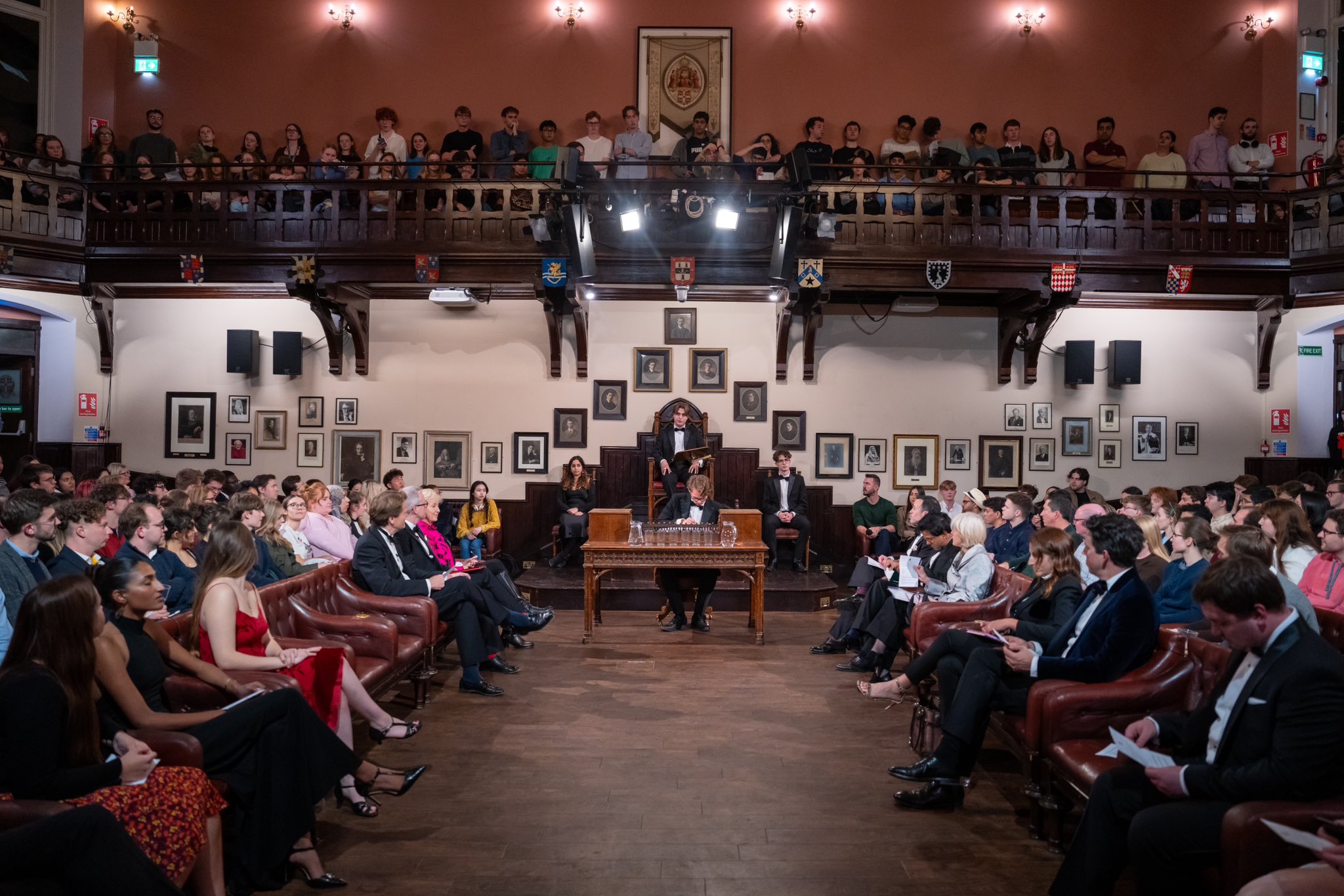Rømmegrøt
- Home Page 18

Elevators & Lifts
The first elevator in the United States was installed at Harvard University in 1874. It was not a passenger elevator as we typically think of today, but rather a freight elevator used to move heavy items within a building. The installation of this elevator marked an important development in building technology and transportation within multi-story structures. It was based on the design of Elisha Otis, who is famous for inventing the safety elevator with a safety brake system that prevents the elevator from falling if the hoisting cable fails. Otis’ innovation played a pivotal role in making elevators safe and practical for everyday use, leading to their widespread adoption in buildings around the world.
Education communities are stewards of 100’s of lifts, elevators and moving walks. At the University of Michigan, there are the better part of 1000 of them; with 19 of them in Michigan Stadium alone. The cost of building them — on the order of $50,000 to $150,000 per floor depending upon architectural styling — and the highly trained staff needed to operate, maintain and program interoperability software is another cost that requires attention. All building design and construction disciplines — architectural, mechanical and electrical have a hand in making this technology safe and sustainabile.
We start with international and nationally developed best practice literature and work our way to state level adaptations. Labor for this technology is heavily regulated.
Its a rarefied and crazy domain for the user-interest. Expertise is passionate about safety and idiosyncratic but needs to be given the life safety hazard. Today we review o pull together public consultation notices on relevant codes, standards and regulations today 11 AM/EDT.
More
NFPA 70 Article 620 Elevators, etc.
NEC Article 620 | David Herres
International Building Code Chapter 30: Elevators and Conveying Systems
Inside Higher Ed: Tragedy in an Elevator
University of Michigan Elevator Recall Control Wiring Schematic
University of Michigan Elevator Shaft Lighting Schematic
The History of Elevators
The first recorded public use of an elevator was in 1743, in a private residence in France. It was created by a French scientist and inventor named Louis-François Dauprat. However, this early elevator was not used for public transportation or in a commercial building.
The first practical passenger elevator was invented by Elisha Graves Otis, an American industrialist and inventor, in 1852. The Otis elevator used a safety device known as a “safety brake” or “safety hoist,” which prevented the elevator from falling in case the hoisting cable broke at a five-story building in New York City in 1857, known as Haughwout Building.
This invention revolutionized vertical transportation, allowing for the construction of taller buildings and changing the way people live and work in urban areas.
The earliest installation of a passenger elevator in a university building in the United States was at the Massachusetts Institute of Technology. In 1861, Otis Brothers & Co., the company founded by Elisha Graves Otis, installed the first passenger elevator on a university campus in the Rogers Building at MIT. The Rogers Building was a three-story structure that housed laboratories, classrooms, and offices for faculty and students. The installation of the passenger elevator provided vertical transportation within the building, making it more convenient for people to move between floors.
This early installation marked an important milestone in the history of vertical transportation on college and university campuses, and it paved the way for the adoption of elevators in other educational institutions as they expanded in size and height over time.
Elevators and Conveying Systems
Latest 2024 / 2025 / 2026 Code Development: Group B Documents
Partial selection of topics:
ADM39-25 IFC: 105.6.26 (New) | p 224
G52-25 403.6.1 Fire service access elevator | p 556
SECTION 3003 EMERGENCY OPERATIONS | p 557
TABLE 403.6.1 AMBULANCE STRETCHER-SIZED ELEVATOR CAR
Add new standards EN 8, EN 77 (Seismic condition design) and ISO 8002 | p 758
SECTION 3006 ELEVATOR LOBBIES AND HOISTWAY OPENING PROTECTION | p 762
3002.3 Emergency signs | p 765
3002.4 Elevator car to accommodate ambulance stretcher. | p 774
(To be continued)
Variations in Backup Power Requirements for Elevators
Group B Proposed Changes 2024 Editions Complete Monograph (2630 Pages)
The International Code Council bibliography of elevator safety practice incorporates titles published by American Society of Mechanical Engineers, the National Fire Protection Association and the Institute of Electrical and Electronic Engineers. The relevant section of the International Building Code is therefore relatively short and linked below.
2021 International Building Code: Chapter 30 Elevators and Conveying Systems
The 2021 IBC is the current edition but committees are now forming to developed the 2024 revision according to the schedule in the link below:
2024/2025/2026 ICC CODE DEVELOPMENT SCHEDULE
2024 GROUP A PROPOSED CHANGES TO THE I-CODES
Comments on changes to the Group A tranche of titles will be heard in Long Beach California, October 23-31st.
![]()
Life Safety Code
Educational and Day-Care Occupancies (July 23, 2025 Second Draft Transcript)
The Life Safety Code addresses those construction, protection, and occupancy features necessary to minimize danger to life from the effects of fire, including smoke, heat, and toxic gases created during a fire. It is widely incorporated by reference into public safety statutes; typically coupled with the consensus products of the International Code Council. It is a mighty document — one of the NFPA’s leading titles — so we deal with it in pieces; consulting it for decisions to be made for the following:
(1) Determination of the occupancy classification in Chapters 12 through 42.
(2) Determination of whether a building or structure is new or existing.
(3) Determination of the occupant load.
(4) Determination of the hazard of contents.
There are emergent issues — such as active shooter response, integration of life and fire safety systems on the internet of small things — and recurrent issues such as excessive rehabilitation and conformity criteria and the ever-expanding requirements for sprinklers and portable fire extinguishers with which to reckon. It is never easy telling a safety professional paid to make a market for his product or service that it is impossible to be alive and safe. It is even harder telling the dean of a department how much it will cost to bring the square-footage under his stewardship up to the current code.
The 2021 edition is the current edition and is accessible below:
NFPA 101 Life Safety Code Free Public Access
Public input on the 2027 Revision will be received until June 4, 2024. Public comment on the Second Draft 2027 Revision will be received until March 31, 2026.
Since the Life Safety Code is one of the most “living” of living documents — the International Building Code and the National Electric Code also move continuously — we can start anywhere and anytime and still make meaningful contributions to it. We have been advocating in this document since the 2003 edition in which we submitted proposals for changes such as:
• A student residence facility life safety crosswalk between NFPA 101 and the International Building Code
• Refinements to Chapters 14 and 15 covering education facilities (with particular attention to door technologies)
• Identification of an ingress path for rescue and recovery personnel toward electric service equipment installations.
• Risk-informed requirement for installation of grab bars in bathing areas
• Modification of the 90-minute emergency lighting requirements rule for small buildings and for fixed interval testing
• Modification of emergency illumination fixed interval testing
• Table 7.3.1 Occupant Load revisions
• Harmonization of egress path width with European building codes
There are others. It is typically difficult to make changes to stabilized standard though some of the concepts were integrated by the committee into other parts of the NFPA 101 in unexpected, though productive, ways. Example transcripts of proposed 2023 revisions to the education facility chapter is linked below:
Chapter 14 Public Input Report: New Educational Occupancies
Educational and Day Care Occupancies: Second Draft Public Comments with Responses Report
Since NFPA 101 is so vast in its implications we list a few of the sections we track, and can drill into further, according to client interest:
Chapter 3: Definitions
Chapter 7: Means of Egress
Chapter 12: New Assembly Occupancies
Chapter 13: Existing Assembly Occupancies
Chapter 16 Public Input Report: New Day-Care Facilities
Chapter 17 Public Input Report: Existing Day Care Facilities
Chapter 18 Public Input Report: New Health Care Facilities
Chapter 19 Public Input Report: Existing Health Care Facilities
Chapter 28: Public Input Report: New Hotels and Dormitories
Chapter 29: Public Input Report: Existing Hotels and Dormitories
Chapter 43: Building Rehabilitation
Annex A: Explanatory Material
As always we encourage front-line staff, facility managers, subject matter experts and trade associations to participate directly in the NFPA code development process (CLICK HERE to get started)
![]()
NFPA 101 is a cross-cutting title so we maintain it on the agenda of our several colloquia —Housing, Prometheus, Security and Pathways colloquia. See our CALENDAR for the next online meeting; open to everyone.
Issue: [18-90]
Category: Fire Safety, Public Safety
Colleagues: Mike Anthony, Josh Elvove, Joe DeRosier, Marcelo Hirschler
More
When lives are at stake, alternative approaches are welcome. #LifeSafety #AlternativeApproaches #Code #NFPA101 @NFPA
https://t.co/JvWyyZtuLP— ANSI (@ansidotorg) December 20, 2018
Debating Society
The Cambridge Union Society, also known as the Cambridge Union, is a historic debating and free speech society in Cambridge, England, and the largest society in the University of Cambridge. The society was founded in 1815 making it the oldest continuously running debating society in the world.
The Union has served as a model for the foundation of similar societies at several other prominent universities, including the Oxford Union and the Yale Political Union. The Union is a private society with membership open to all students of Cambridge University and Anglia Ruskin University.
“This House Believes Modern Conservatism is Incompatible with Democracy” Play All
The Cambridge Union is a registered charity and is completely separate from the Cambridge University Students’ Union.
The Cambridge Union Debating Society hosts its events primarily on Thursdays during the academic term at the University of Cambridge. Their flagship events include:
Thursday Night Debates: Held weekly in the Debating Chamber, these are the highlight of the Union’s schedule, featuring prominent speakers and students debating topical issues. Debates typically start at 8:00 PM, but exact times may vary, and some are livestreamed on platforms like YouTube.
Keynote Speaker Events: These occur approximately twice a week, involving interviews and Q&A sessions with notable figures. Timing varies but often aligns with evening slots to accommodate student schedules.
Social and Special Events: Events like balls, workshops, or themed nights (e.g., Zumba, Eurovision parties) are scattered throughout the term, often on weekends or evenings. These may be free or discounted for members.
Competitive Debating Events: The Union organizes competitions like the Cambridge Schools Debating Competition, with regional rounds typically between January and March and Finals Day on a Saturday or Sunday in spring.
Specific dates and times are detailed in the Union’s termcard, published each term (Michaelmas, Lent, Easter) on their website (cus.org) or platforms like Issuu. For precise schedules, check the Cambridge Union’s official website or contact them at info@cus.org, as their membership portal occasionally undergoes maintenance, which may delay updates.
Events are generally held at their Bridge Street premises, with some open to the public or livestreamed. Membership provides access to exclusive events and discounts.
UK is done.
Who is next? pic.twitter.com/GSRH21pWKL— Afghan Zoroastrian (@AfgZoroastrian) April 18, 2025
Truly unsettling scenes unfolding in Ireland lately.
An Irish woman looks on in shock as a crowd of migrants are moved into a taxpayer funded hotel. pic.twitter.com/7tBCQuI89c
— MichaeloKeeffe (@Mick_O_Keeffe) March 29, 2025
Freely Available ICT Standards
United States Technical Advisory Group Administrator: INCITS
TC 64 Electrical installations and protection against electric shock
“Le Lac Léman ou Près d’Evian au lac de Genève” 1883 François BocionISO and IEC Joint Technical Committee 1 is the work center for international information and communications technology (ICT) standards that are relevant to education communities. In accordance with ISO/IEC JTC 1 and the ISO and IEC Councils, some International Standards and other deliverables are made freely available for standardization purposes.
Freely Available International Standards
We at least follow action, and sometimes contribute data and user-interest perspective, to the development of standards produced by several ANSI-accredited ICT standard developing organizations — ATIS, BICSI, IEEE, INCITS, TIA among them. US-based organizations may communicate directly with Lisa Rajchel, ANSI’s ISO/IEC JTC 1 Senior Director for this project: lrajchel@ansi.org. Our colleagues at other educational organizations should contact their national standards body.
We scan the status of Infotech and Cloud standards periodically and collaborate with a number of IEEE Societies. See our CALENDAR for the next online meeting; open to everyone.
More
The ISO/IEC Joint Technical Committee for Information Technology (JTC 1)
ISO/IEC JTC 1/SC 36 Information technology for learning, education and training
Canadian Parliament Debate on Standards Incorporated by Reference
Originally posted January 2014
In these clips — selected from Canadian Parliamentary debate in 2013 — we observe three points of view about Incorporation by reference (IBR); a legislative drafting technique that is the act of including a second document within a main document by referencing the second document.
This technique makes an entire second (or referenced) document a part of the main document. The consensus documents in which we advocate #TotalCostofOwnership concepts are incorporated by reference into legislation dealing with safety and sustainability at all levels of government. This practice — which many consider a public-private partnership — is a more effective way of driving best practices for technology, and the management of technology, into regulated industries.
Parent legislation — such as the Higher Education Act of 1965, the Clean Air Act and the Energy Policy Act – almost always require intermediary bureaucracies to administer the specifics required to accomplish the broad goals of the legislation. With the gathering pace of governments everywhere expanding their influence over larger parts of the technologies at the foundation of national economies; business and technology standards are needed to secure that influence. These standards require competency in the application of political, technical and financial concepts; competencies that can only be afforded by incumbent interests who build the cost of their advocacy into the price of the product or service they sell to our industry. Arguably, the expansion of government is a reflection of the success of incumbents in business and technical standards; particularly in the compliance and conformity industries.



About two years ago, the US debate on incorporation by reference has been taken to a new level with the recent statement released by the American Bar Association (ABA):
16-164-Incorporation-by-Reference-ABA-Resolution-and-Report
The American National Standards Institute responded to the ABA with a statement of its own.
16-164-ANSI-Response-to-ABA-IBR-06-16 (1)
The incorporation by reference policy dilemma has profound implications for how we safely and economically design, operate and maintain our “cities-within-cities” in a sustainable manner but, admittedly, the results are only visible in hindsight over a time horizon that often exceed the tenure of a typical college or university president.
A recent development — supporting the claims of ANSI and its accredited standards developers — is noteworthy:
U.S. District Court Rules in Favor of Copyright Protection for Standards Incorporated by Reference into Federal Reg https://t.co/Tw2OnpMqua pic.twitter.com/i84fjUvQDS
— ANSI (@ansidotorg) February 13, 2017
The National Institute for Standards and Technology (NIST) manages a website — Standards.GOV — that is a single access point for consensus standards incorporated by reference into the Code of Federal Regulations: Standards Incorporated by Reference Database. Note that this database does not include specific reference to safety and sustainability codes which are developed by standards setting organizations (such as NFPA, ICC, IEEE, ASHRAE and others) and usually incorporated by reference into individual state public safety and technology legislation.
LEARN MORE:
We applaud the Federal Government’s commitment to fund free access to the National Building Codes that are developed by the @NRC_CNRC. As a not-for-profit developer of standards that contribute to the health, safety and well-being of Canadians, CSA Group…https://t.co/QqhdkDvb7s pic.twitter.com/1KRDvxDTaC
— CSA Group (@CSA_Group) November 23, 2018
New update alert! The 2022 update to the Trademark Assignment Dataset is now available online. Find 1.29 million trademark assignments, involving 2.28 million unique trademark properties issued by the USPTO between March 1952 and January 2023: https://t.co/njrDAbSpwB pic.twitter.com/GkAXrHoQ9T
— USPTO (@uspto) July 13, 2023
Standards Michigan Group, LLC
2723 South State Street | Suite 150
Ann Arbor, MI 48104 USA
888-746-3670
























